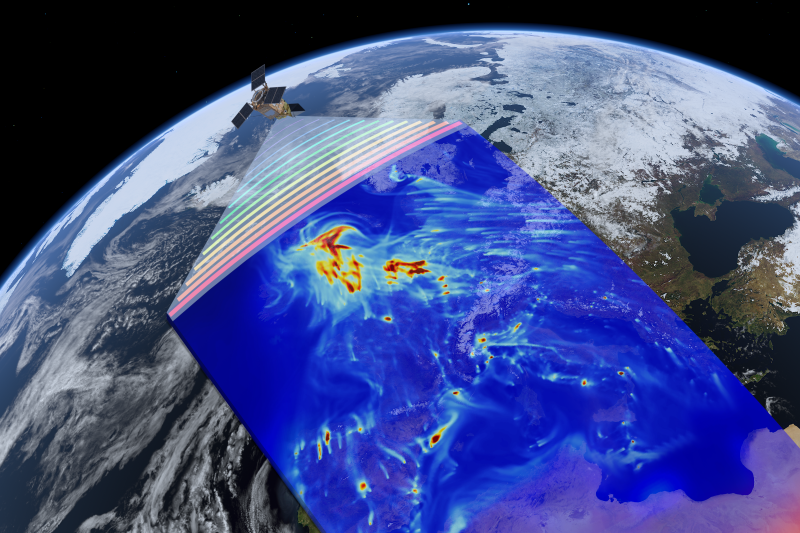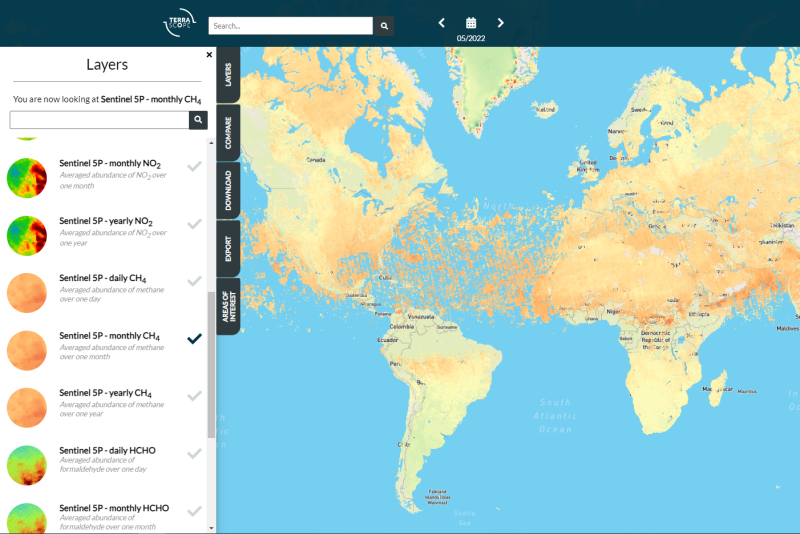Additional Sentinel-5P data products
Since 2019, BIRA-IASB and VITO have been collaborating on providing gridded daily, monthly, and yearly Sentinel-5P TROPOMI air quality maps. In January 2021 we already released the Sentinel-5P air quality data products for nitrogen dioxide (NO2) and carbon monoxide (CO) via the Terrascope services.
Now, we are pleased to release two additional air quality products, namely methane (CH4) and formaldehyde (HCHO). These high-quality data products are of interest to a variety of users, including the general public, health authorities, climate scientists, and policy makers. Discover the four available Sentinel-5P air quality data products via the Terrascope viewer.
- nitrogen dioxide (NO2)
- carbon monoxide (CO)
- methane (CH4)
- formaldehyde (HCHO)
Monitoring the atmospheric methane increase
Methane (CH4) is a strong greenhouse gas that is emitted by both natural (e.g. wetlands, thawing permafrost, cattle) and anthropogenic sources (e.g. petrochemical industry, coal mining, landfill). Its heat capturing capacity is about 30 times more efficient than that of carbon dioxide (CO2), but its atmospheric lifetime is only ~10 years, compared to hundreds of years for CO2. Due to the human-induced global temperature rise, its effects (e.g. increased permafrost thawing) have led to an increased atmospheric methane growth rate over the last years, as recently reported by the Copernicus Climate Change Service (C3S). Therefore monitoring the atmospheric methane increase, as well as any future reduction owing to policy measures, with TROPOMI observations is of paramount importance.
Formaldehyde data products to support climate studies
Formaldehyde (HCHO) is produced as an intermediate gas in most chemical formation chains that produce CO and eventually CO2. Further, it is a proxy for the presence of certain components that are involved in the production of toxic tropospheric ozone (O3). In tropical regions, formaldehyde is mainly present due to biomass burning processes, while in temperate regions it originates from anthropogenic activities (e.g. traffic and industry). Its detection is highly relevant in climate studies to monitor among others these anthropogenic emission changes.
Fully updated archive
All current products (NO2, CO, CH4, HCHO) derived from Sentinel-5P TROPOMI data in Terrascope are based on Data Set Specifications v2. We have updated the archive and it is now entirely consistent from 2018 onwards. All products now have version number v200.



